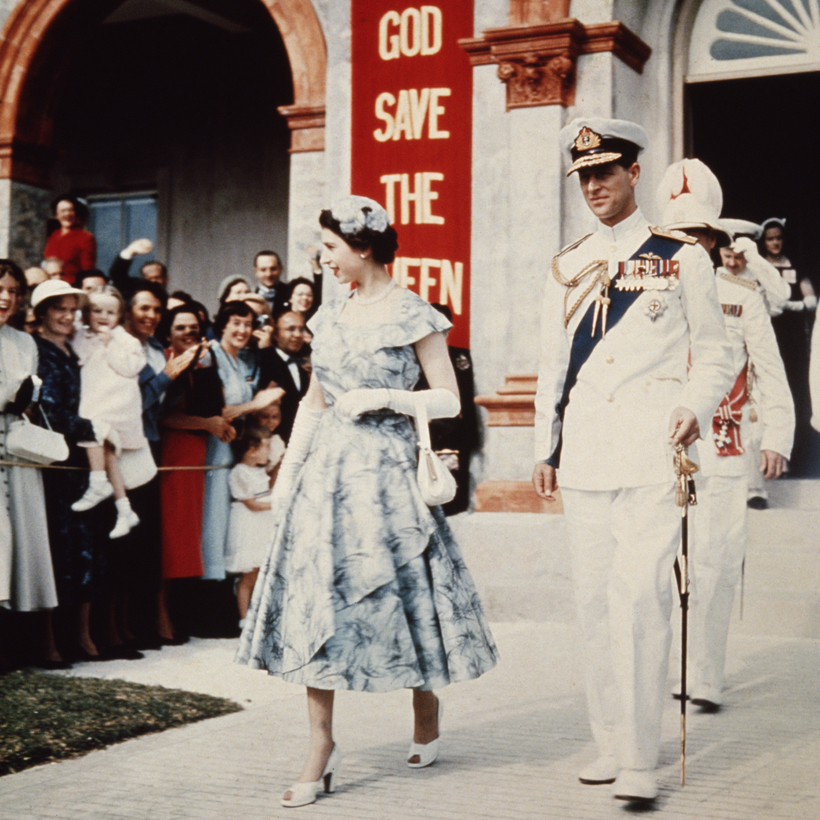In the classic fairy-tale formula, the handsome prince overcomes all obstacles to pluck his beloved from hardship or obscurity and make her his princess. In Elizabeth & Philip, Tessa Dunlop flips the fantasy on its head as she tells the story of a princess who meets the prince of her dreams and conquers all opposition to place him beside her on the throne.
While this Windsor romance is an oft-told tale, Dunlop winkles out some new details and angles to refresh the story. Her cleverest ploy comes in interviews with a handful of contemporaries of the late Queen. Nonagenarians and even centenarians, ordinary people, share their ancient but undimmed memories of the love story that brightened a dreary postwar Britain. To a surprising and touching degree, these common folk identified with the royal couple.

Barbara Weatherill, 97, recalls Elizabeth as a Girl Guide who loved ponies and the color yellow. In truth, there was not much more to know during the Second World War, when King George VI kept his adored daughters, Elizabeth and Margaret, in what Dunlop calls “Windsor Lockdown,” well away from the outside world.
But there was one thing.
In 1939, Lilibet, as Elizabeth was nicknamed, was barely a teenager when she met her third cousin, the 18-year-old naval cadet Prince Philip of Greece and Denmark. What girl of 13 could resist this tall, blond Viking—lively, engaging, and Hollywood handsome? The princess was lovestruck, but this was no fleeting adolescent crush. She set her tiara for him that day and never wavered.
Philip was both prince and pauper. Sixth in line to the teetering Greek throne, he was the child of a broken family, with no real home. His grand relations paid him scant attention, with one exception: his ambitious uncle “Dickie” Mountbatten. Mountbatten pushed his attractive nephew toward the princess, smoothing his way into the Royal Navy, managing his quest for British citizenship, and plying him with invitations that promised access to Elizabeth.
Philip eagerly took up the torch, feeling himself “destined for Princess Elizabeth,” as he told one disappointed admirer. The courtship endured the separation of the war years followed by a four-month royal tour of Africa.
At home, Philip found he had new battles to fight, first with the gilded world of the court, where his brusque, hearty wardroom manner was as unwelcome as his foreign pedigree. Then, too, Fleet Street was equally suspicious, with one tabloid headlining a public poll with a single question: SHOULD OUR FUTURE QUEEN WED PHILIP?
Meanwhile, Lilibet, usually so biddable, fended off all opposition and triumphed with a palace coup. In May 1947 the engagement was published.
Another of Dunlop’s nonagenarians, Philip Jarman, speaks for the evolving public opinion of the match. “People did say unkind things about him. But he had served in the Royal Navy and been commended for bravery. That was good enough for me.” Now Elizabeth became the focus of attention—her dress, her vows, her feelings dominated discourse until the wedding day.

More than half the book is consumed with the pair’s courtship and wedding. All the landmarks of their early marriage—the death of the King, the coronation, the births of Charles and Anne, the official tours—flow easily through the remainder in Dunlop’s comfortable, chatty tone.
She also explores what private life they were allowed to have. Elizabeth deferred to her husband wherever she could, but duty always commanded the Queen, and she commanded Philip in such matters as the name for the royal house (he plumped for Mountbatten; she won with Windsor), or where they would live (her Buckingham Palace trumped his Clarence House). As Philip navigated the choppy waters of rumored infidelities, Elizabeth remained regally impassive. Yet, years later, she was caught on film snubbing one of his supposed paramours, a bit of public revenge, perhaps, for a private pain.
Those early years also saw Philip effortlessly support the nervous young Queen. His larger-than-life personality filled any void left by her shyness and inexperience. Her position gave him the role and resources he once lacked. That is the essence of the book: they each had needs and gifts that dovetailed into a successful marriage.
Beyond that essence one question lingers, unanswerable. Shelia Albrecht, 100, sums it up best. “She loved him and he loved her. At least I think he did.”

Robin Olson is a writer and painter. She lives in Vermont

